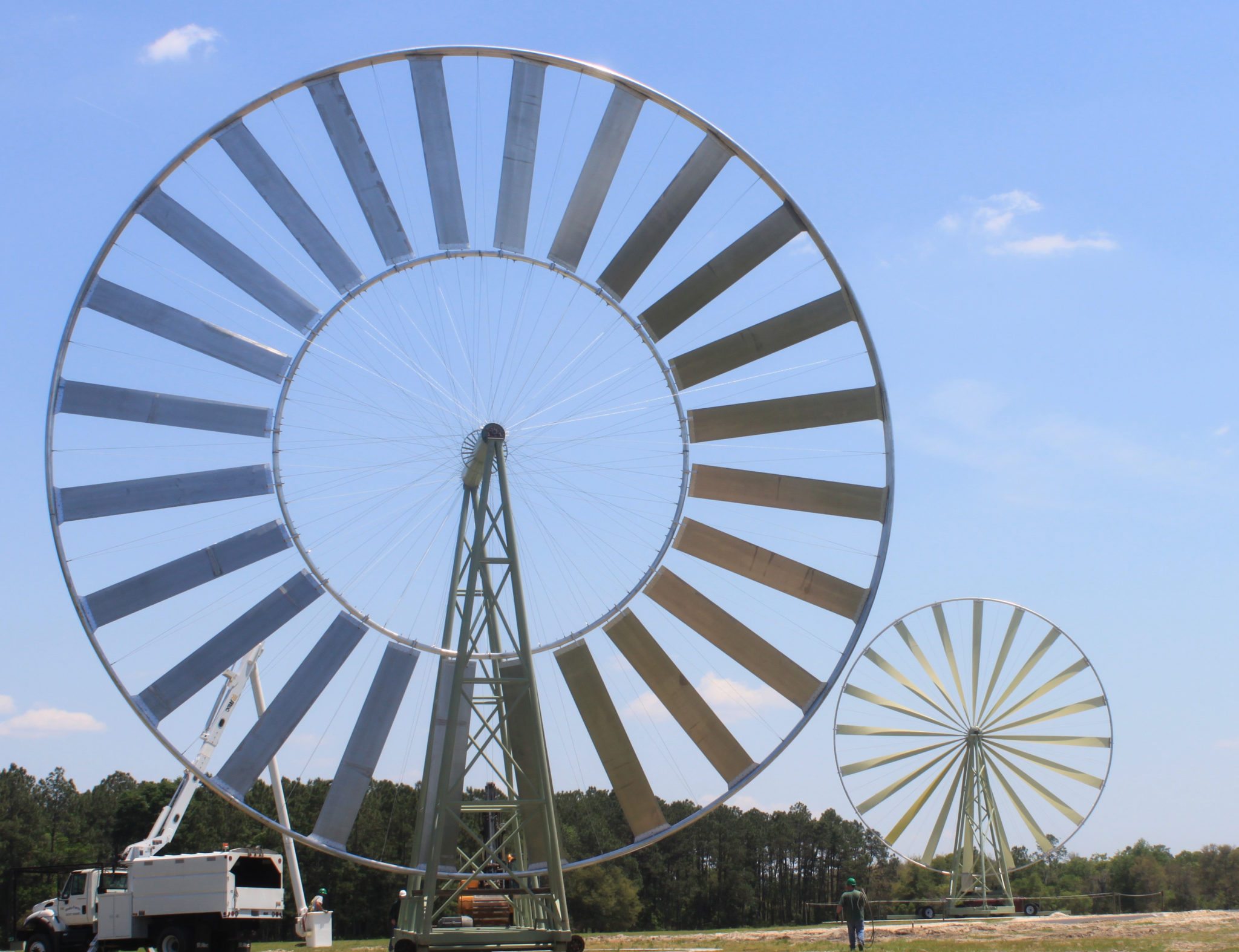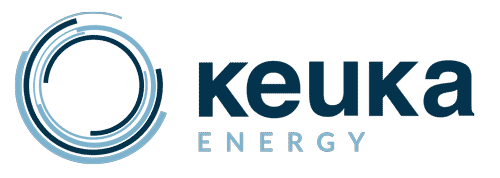Technology
Today’s wind industry is facing three major problems: higher cost, intermittency, and scalability. Recognizing these issues early on gave Keuka Energy the opportunity to work around them. The Rimdrive deals with cost by eliminating the gear box that adds up to approximately 25% of the long-term cost of conventional wind machines. Keuka also uses aluminum blades that are approximately 10% the cost of composite blades. Additionally, the “stayed blade” design offers the ability to build much larger machines capable of operating in lower and higher wind speeds. Energy stored as liquid air addresses intermittency.
The conventional wind machine is seemingly simple in design—three blades and a hub mounted to a tower. The eye does not immediately see the complexity and trouble. The gear box is often the Achilles heel of the wind machine due to failures that occur within that system. The Rimdrive eliminates this costly and troublesome component. In addition, the “stayed blade” design will allow wind machines of the future to exceed 100 megawatts on land and larger for offshore wind farms.

Offshore Wind Farms
- Our offshore floating wind farms are less expensive per kW than conventional onshore wind farms. They cost less than $1m/MW.
- An offshore farm can have an onboard water/oil cooled substation. This allows for daily maintenance and lower costs.
- Offshore machines can be assembled in protected water and towed to their locations at 10-15 knots.
- A 175 MW wind farm can have one common support structure.
- The 12.5 MW machines require no individual yaw mechanisms because the entire support structure weathervanes into the wind.
- Provides an “out of sight, out of mind” power system capable of anchoring in deep water. No underwater work is necessary.
- This system stores compressed and liquid air in its support structure.
- Support structure creates calm water for berthing up to four LNG class tankers simultaneously so that liquid air may be transported to regassing facilities onshore.
The Advantages of Rim Drive Turbines
Weight is Down Low: The liquefaction system, compressors, generators, etc. don’t put pressure on the tower system since they are located at the base of the tower.
Flywheel Effect: The system has a flywheel effect that absorbs wind gusts, eliminating most turbulence problems.
Scalability: Stayed blade systems are scalable to multi-megawatt sizes (possibly > 100MW per machine)
No Bird Problems: Slower operating rpm and multiple blades means no bird or bat kills.
Easier to Maintain: The blade lowers to the base on its own power for repairs or maintenance
Locally Available Components: All components of the system are locally available in most countries.
Long Service Life: 100-year service life on totally recyclable marine grade aluminum blades.
No Cranes Needed: There is no need for heavy cranes to install the machines since they are assembled at ground level.
Drives up to 36 components: Each blade can direct drive up to 36 individual components simultaneously.
Less Capital Investment: Requires much less capital and O & M cost per kW than conventional three-bladed machines.
No Gear Box: Turbine produces power in wind speeds from 4 m/s through 20 m/s without the use of expensive gear boxes.
More Powerful: Blades are more powerful per square meter of blade swept area than existing machines.
Less Turbulent: The semi-open center design creates less downstream turbulence and allows for installation of more units per square mile.
